The ewe grows restless. She has borne the weight of her swelling belly all winter while the earth slept and she is heavy and tired, full and uncomfortable. The life within her hastens. Her belly and her back ache and she stretches and paces to find relief. She finds a quiet place, a safe place, for she is vulnerable now as her focus draws inwards to the burgeoning urgency of her body.
Birth is orchestrated by a complex chemical communication system between the unborn foetus and mother that we do not fully understand. Isn’t that something? For all our technological and medical advances, the intricate workings of birth, that most primal and basic threshold of life, remain a mystery. Birth, the portal between worlds where the veil is thin and spirits slip easily between them, still a miracle, beautiful, powerful and profound in all its mess and blood and glory. There is a tendency in our human world to fear and whitewash birth; to sterilise, sanitise, control and strip birth of all its rawness and power. But the ewe knows nothing of our human fears. She knows only the driving, instinctual force that pulls her awareness into her body. She yields to her body’s cues and surrenders to the process.
Her breath quickens, coming shallow and soft. Her gaze is distant, her focus inwards. Her awareness drops deeper into her body and she sinks to the earth in surrender, her nose turning skyward, body contracting as the surging waves of her womb find rhythm.
Many moons ago when I was preparing for the birth of my child, my midwife gave me a printout of The Rhythmic Second Stage1 by Sheila Kitzinger which describes the natural, wave-like rhythm of labour and the soft, light, rapid breathing pattern of a labouring ewe that “produced twins with a minimum of fuss and remarkable economy of effort” (in contrast to what Kitzinger describes as the vigorous, over-breathing often taught to women). Breathe like the sheep, my midwife taught me. Soften. Surrender.
The ewe has no one to teach her but her own instincts and the physiological symphony of her body, honed and perfected over millennia. She knows what to do. The ewe’s body (and the woman’s—birth in all 4,000 species of placental mammals of which we are one follows the same basic, physiological process) is made for this in nature’s perfect, inimitable design. Her strong pelvic ligaments have softened and her pelvis, built wide and open to accommodate pregnancy and birth, relaxes and opens to allow the passage of her lamb pushed through by the expulsive, muscular force of her womb, all of it co-ordinated by an orchestra of hormonal interplay between lamb and ewe. But the ewe does not need to know the complexities of how her body works or what will come, or the fears of what might or could go wrong. The ewe lives fully in each moment, gives herself completely to the overwhelming power of each rising surge of intensity and rests in the gushing relief that follows.
She calls for her lamb. She has been here before, she remembers. The sea salty smells of blood and birth fluids awaken in her a primordial urge to nurture the fruit of her womb.
The technical term for birth is parturition, stemming from the Latin parere; to bring forth. It is the parture of infant from mother, the bringing forth of life from life, flesh from flesh.
A part of her goes, too, when she gives birth. A part of her is given to the life she grew within her and opened up and pushed into the world and she feels hollow, afterwards. Empty. And the only way she can fill that void and feel whole and full again is to keep her lamb close, feel and smell and taste and breathe her closeness, her life, her wholeness; to feed her lamb and bathe in the cascade of hormones that flood her system and heal her body as to nurture her lamb is to nurture her own fulfilment. That is the mothering drive. A force so strong that it bears the proliferation of all mammalian life, and in sheep, the cohesive bond that sustains the unity of the flock.
The ewe has a lamb; a mother is born.
Always a profoundly humbling thing to witness, precarious new life, so fragile and so precious, emerging. Perhaps because it reminds us of our own fragile mortality, or connects us to that primal core that burns deep within us all.
Some photos of a magnificent birth, a ewe becoming a mother in all her mess and glory, her rawness and power.
This was a three sheet photocopy of a passage that my midwife printed out for me over twenty years ago; I have not been able to find out where it was originally published.



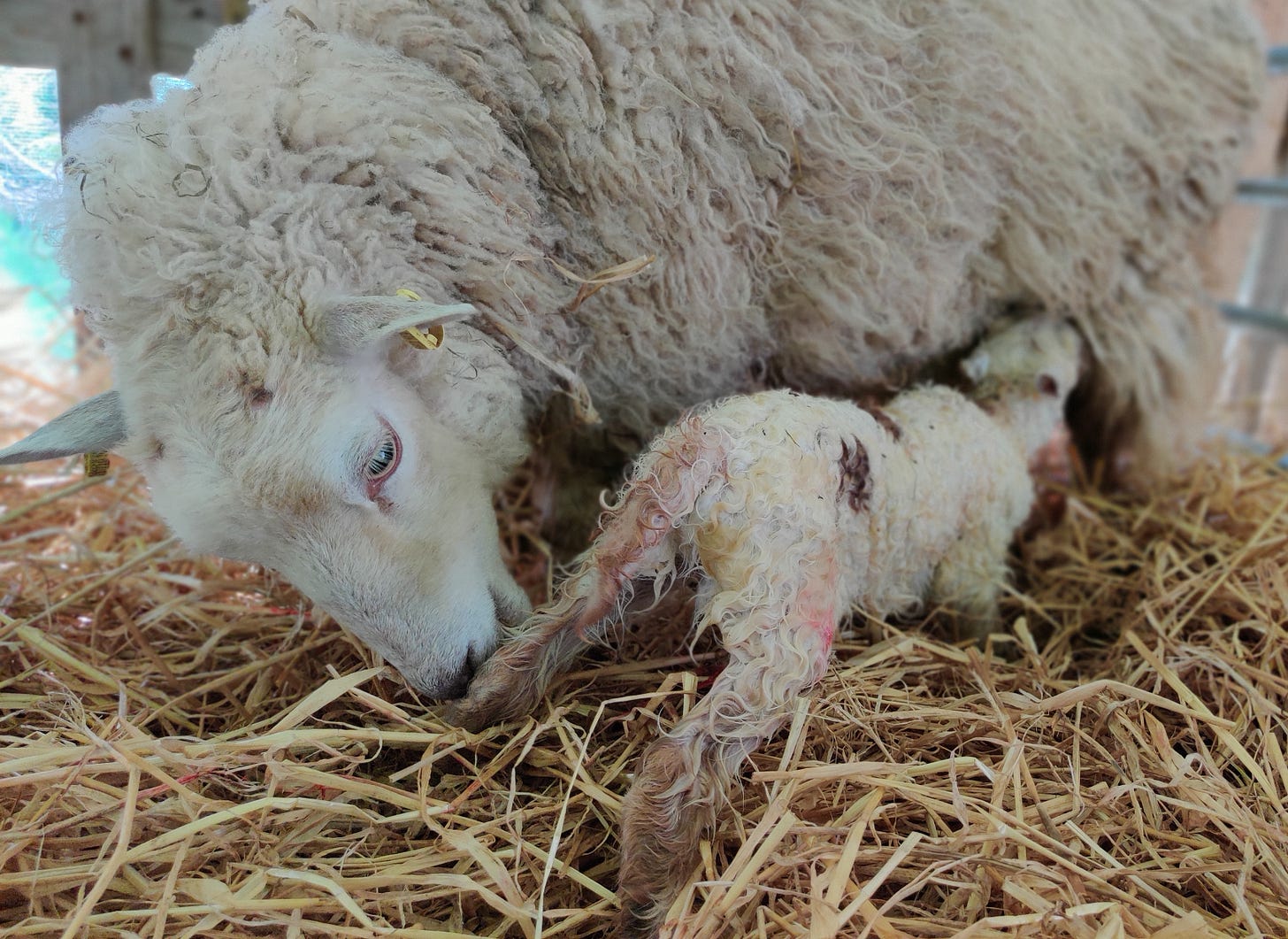
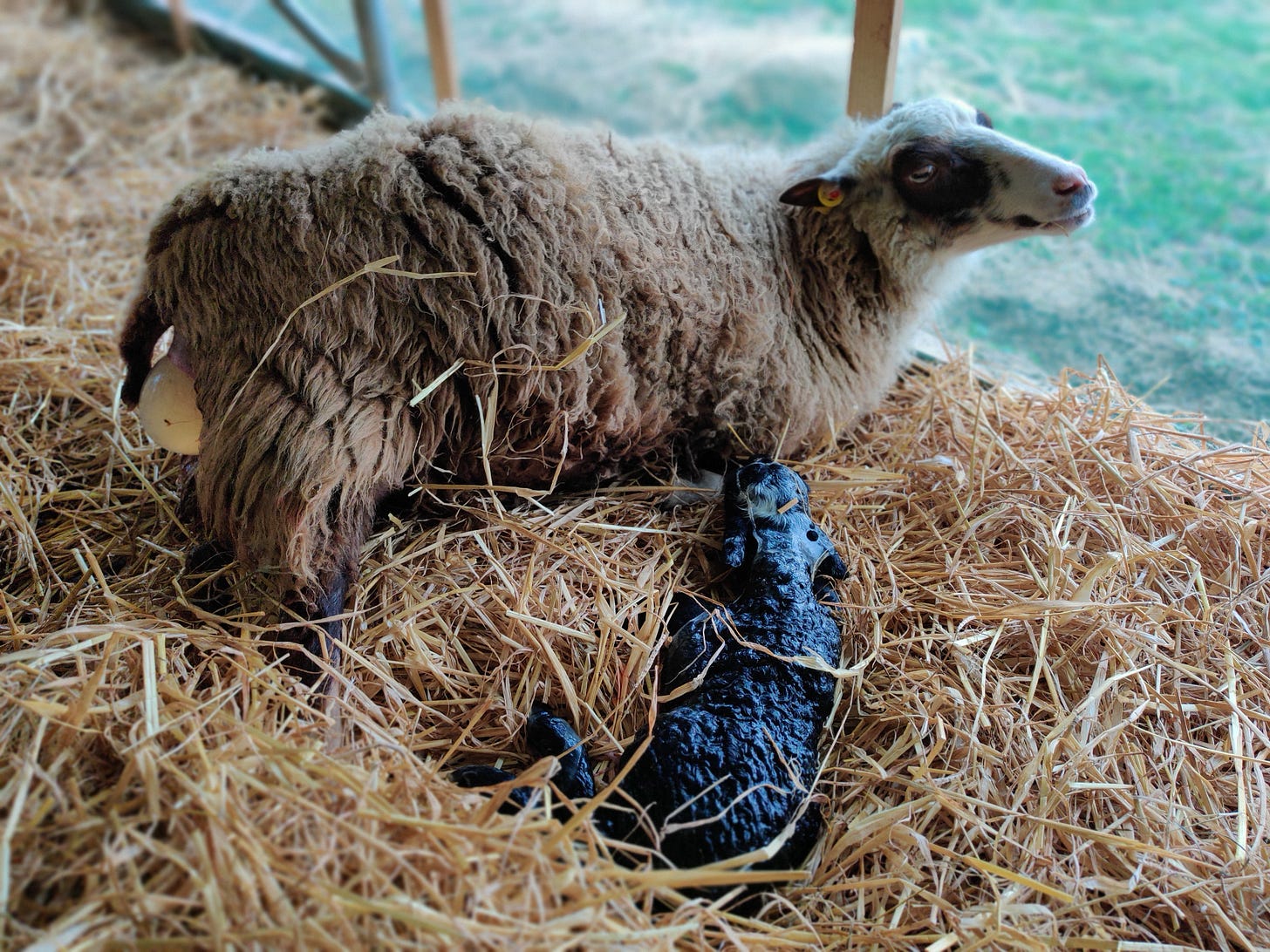
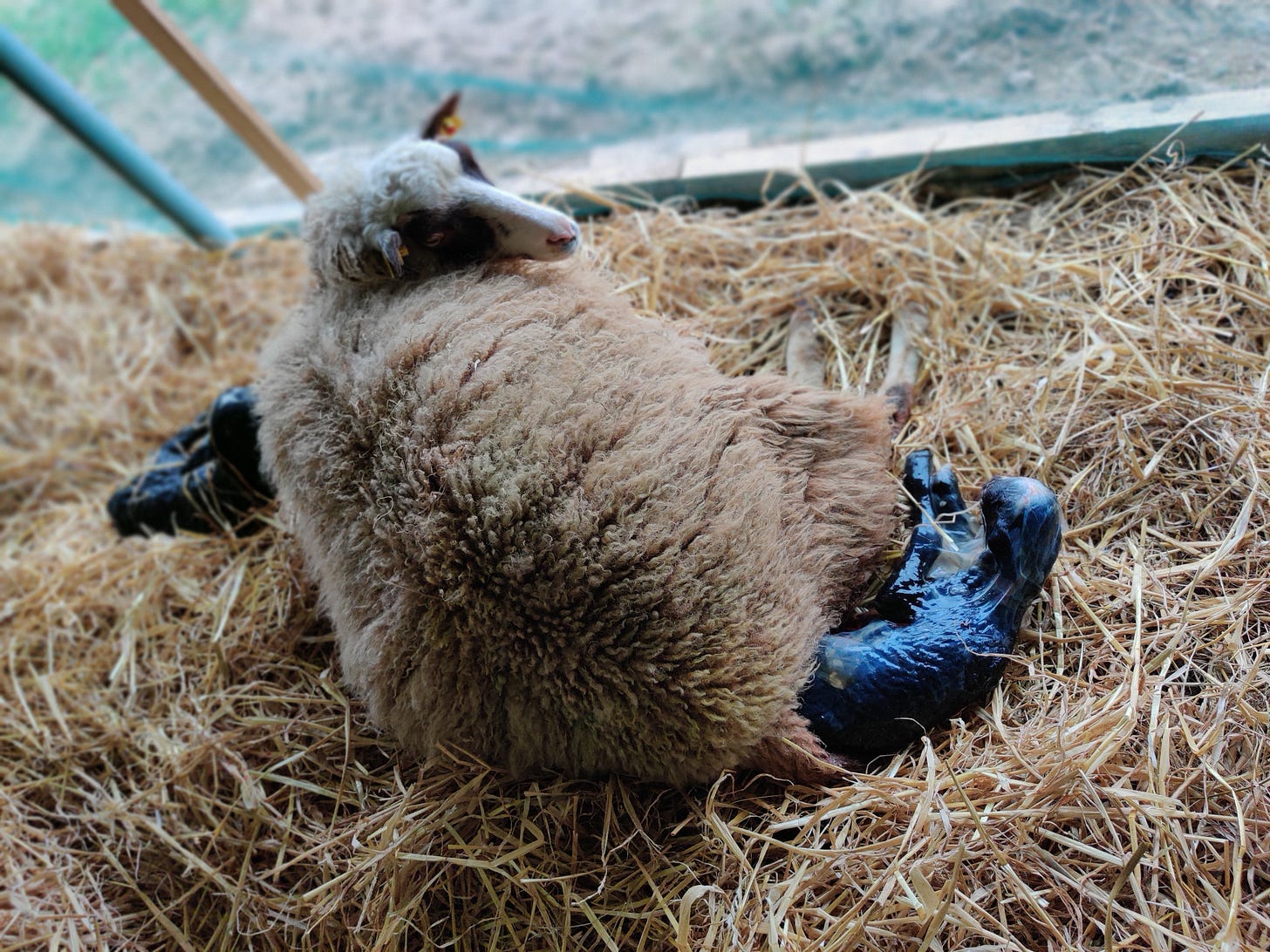
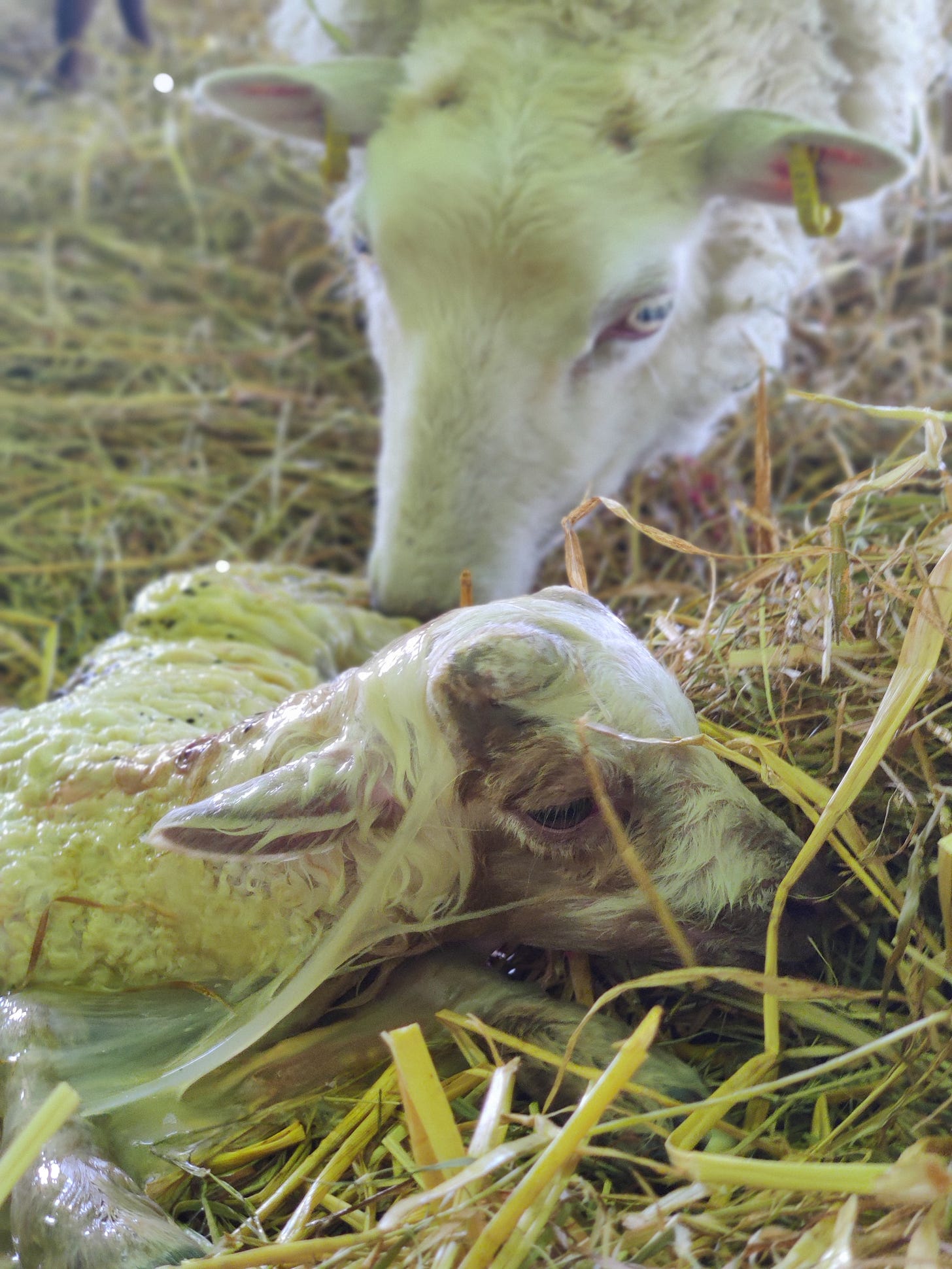

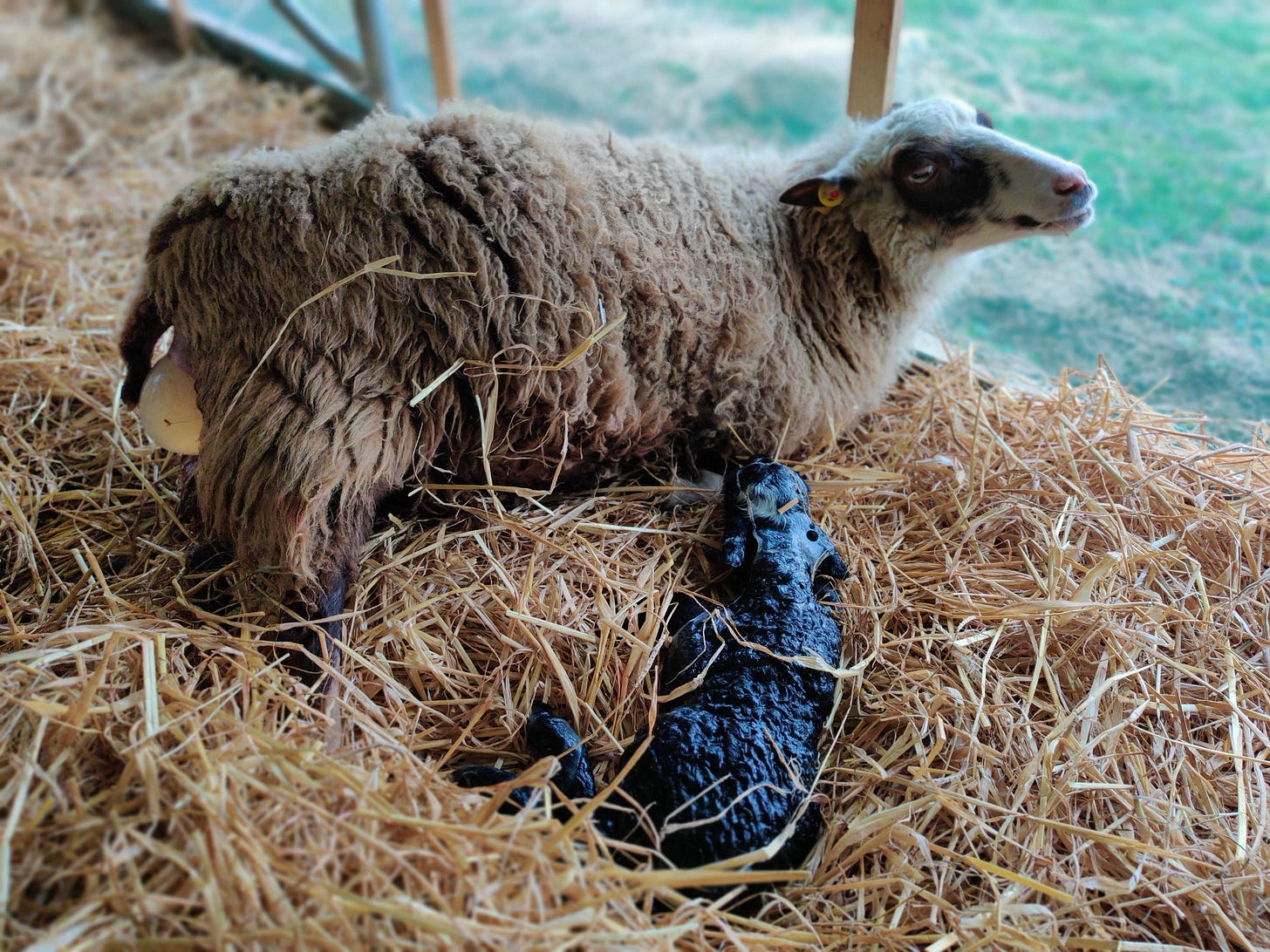
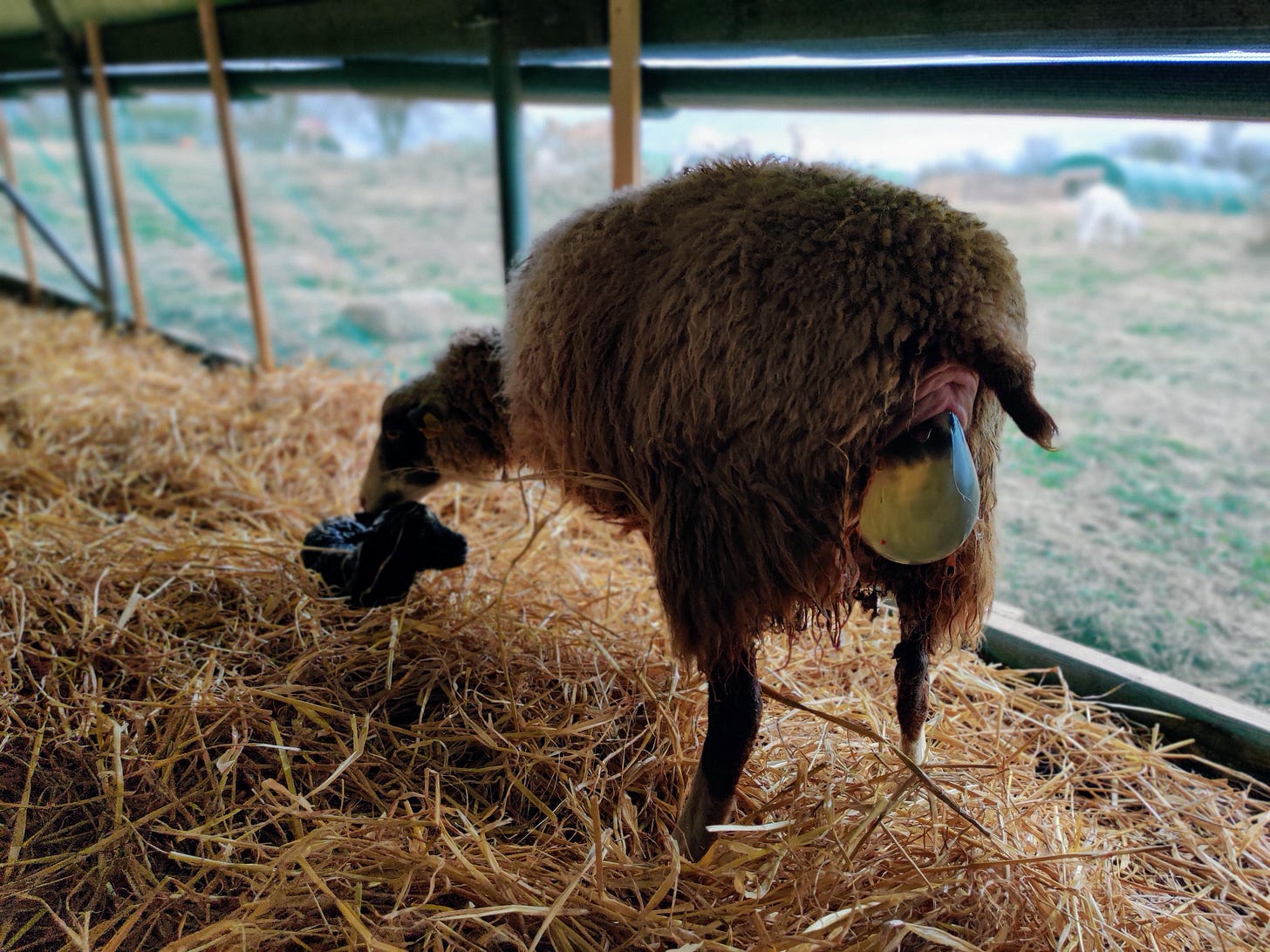
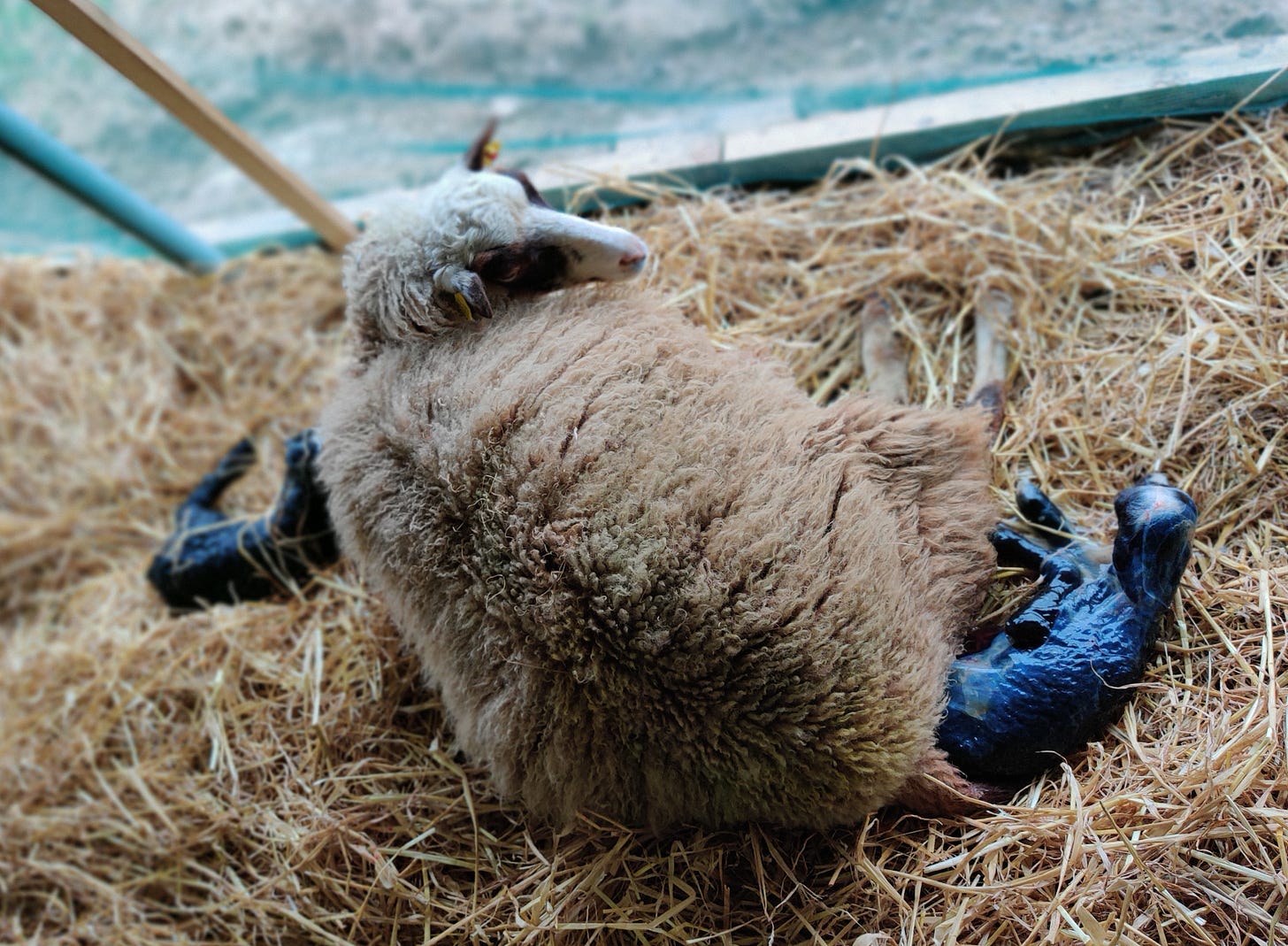
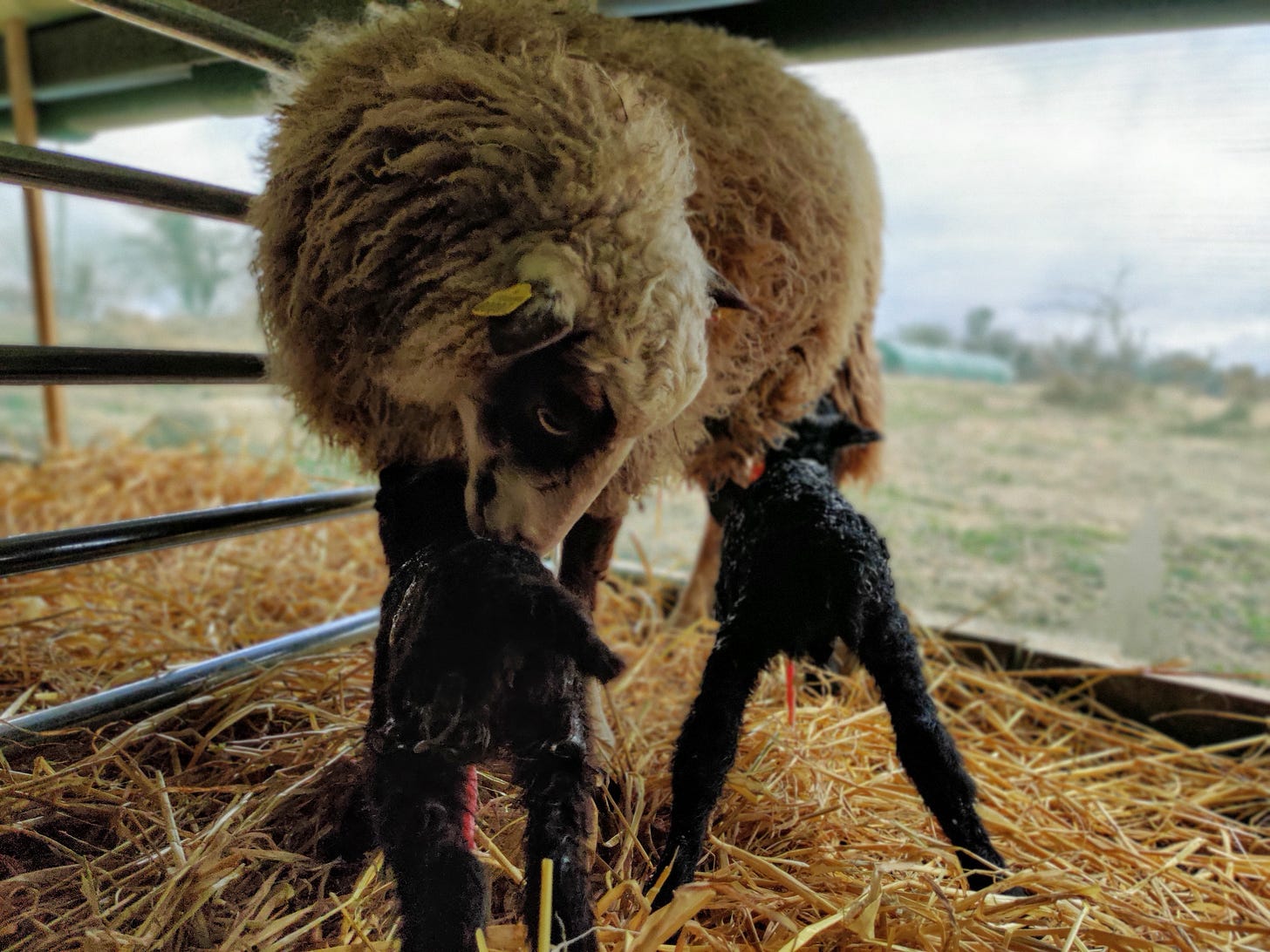
I swear, mom looks like she's smiling in one of those pics...
What a gorgeous piece and pictures. Thank you!